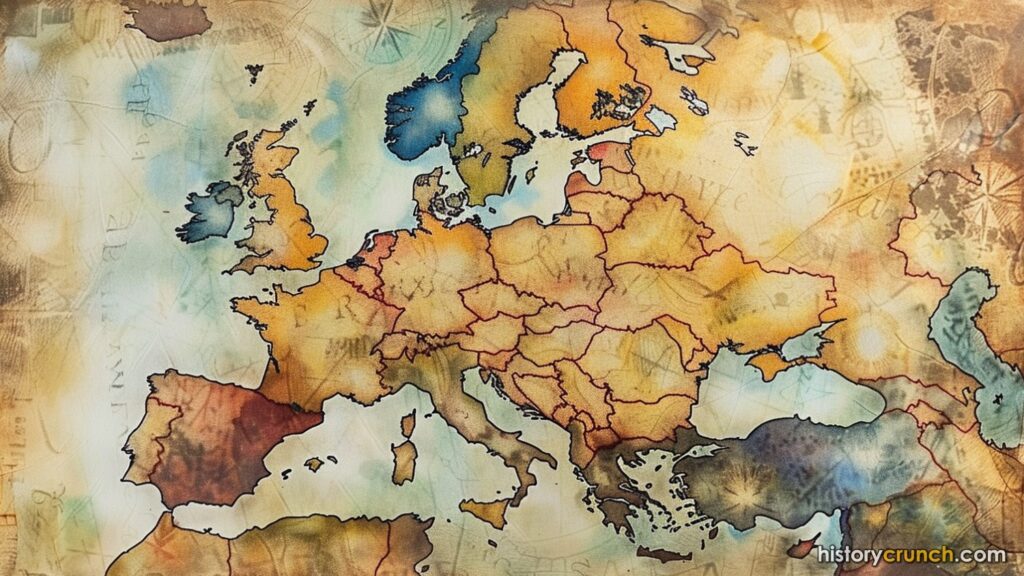The alliance systems before World War I refers to the two main alliance systems that divided the main powers of Europe and set the stage for the First World War. In short, this includes the Triple Alliance and the Triple Entente. These alliance systems were significant because they led to the eventual 1914 outbreak of World War I. As such, historians consider both the Triple Alliance and the Triple Entente to be significant causes of World War I. They helped divide Europe in the early 20th century and created a tense situation that caused war to erupt following the assassination of Austrian Archduke Franz Ferdinand on June 28th, 1914. Click on the links below to read more about each topic related to the alliance systems before World War I.

ALLIANCE SYSTEMS BEFORE WORLD WAR I – TRIPLE ALLIANCE
The Triple Alliance was a mutual defence alliance between the major European nations of Germany, Austria-Hungary and Italy. This means that each member nation agreed to come to the military aid and defense of the other member nations in the event that they were attacked. The Triple Alliance was first formally established by the member nations on May 20th, in 1882. In the years leading up to 1914, which was the start of World War I, the main terms of the Triple Alliance were renegotiated and renewed several times.
The Triple Alliance was a major factor in dividing Europe between the European powers of the time. In fact, one of the main reasons why historians consider the alliance systems before World War I as a main cause for the outbreak of the war, is because it set the stage for hostilities between nations such as Germany and France. For example, the Triple Alliance eventually led to the informal agreement of the Triple Entente between Britain, France and Russia as a competing alliance system in Europe. Another issue related to the Triple Alliance and the outbreak of World War I, was that the main terms of the treaty were kept secret. This led to the start of World War I because it prevented the member nations of the Triple Entente from understanding how their actions impacted the military response from Germany. As a result, this caused the tensions between the nations to increase dramatically following the assassination of Austrian Archduke Franz Ferdinand.
While Italy was a member nation of the Triple Alliance, it is important to note that ultimately Italy sided with the Triple Entente when World War I began. This is because, following Ferdinand’s death, Austria-Hungary began taking aggressive actions against Serbia, which was located in the Balkans. As a result, Italy declared war against Austria-Hungary as the start of World War I, and joined the Allied Powers alongside France, Britain and Russia.

ALLIANCE SYSTEMS BEFORE WORLD WAR I – TRIPLE ENTENTE
The Triple Entente was an informal agreement between the European nations of France, Russia and the United Kingdom (Britain) in the years before the 1914 outbreak of World War I. The French term ‘entente’ means agreement or friendship, thus showing that the Triple Entente was an agreement of mutual support for the member nations. With that said, the Triple Entente was not necessarily a true military alliance as was its counterpart – the Triple Alliance. The Triple Alliance was a mutual defense alliance between the major European nations of Germany, Austria-Hungary and Italy.
The first of these agreements was the Franco-Russian Alliance. The Franco-Russian Alliance was an economic and military alliance between France and Russia that reached following a series of meetings and exchanges that occurred from 1891 until 1894. The next agreement that led to the development of the Triple Entente was the ‘Entente Cordiale’. The Entente Cordiale was an agreement between France and the United Kingdom that was finalized on April 8th in 1904. The Entente Cordiale was tested in the early 1900s with the events of the First Moroccan Crisis and the Second Moroccan Crisis. The last agreement that led to the development of the Triple Entente was the Anglo-Russian Entente. This agreement was made between the United Kingdom and Russia on August 31st in 1907. When combined with the earlier agreements of the Franco-Russian Alliance and the Entente Cordiale, the Anglo-Russian Entente finalized the informal alliance between France, Russia and the United Kingdom.
The member nations of the Triple Entente maintained their loyalty with one another and when war broke out in 1914, the three nations entered World War I as the Allied Powers. The Allied Powers of World War I faced off against the Central Powers, which included Germany, Austria-Hungary, Bulgaria and the Ottoman Empire. Italy, which had previously been a member of the Triple Alliance with Germany and Austria-Hungary flipped sides and instead joined the Allied Powers.
ALLIANCE SYSTEMS AS A CAUSE OF WORLD WAR I
As shown above, the Triple Alliance and the Triple Entente helped set the stage for World War I. As such, historians consider these alliance systems to be major causes of the First World War. First, they divided Europe between two different sides. This increased tensions between the European powers including France and Germany. Second, they obligated the different nations to go to war once the tensions erupted over the assassination of Austrian Archduke Franz Ferdinand. As such, the alliance systems helped escalate the crisis once it began.


